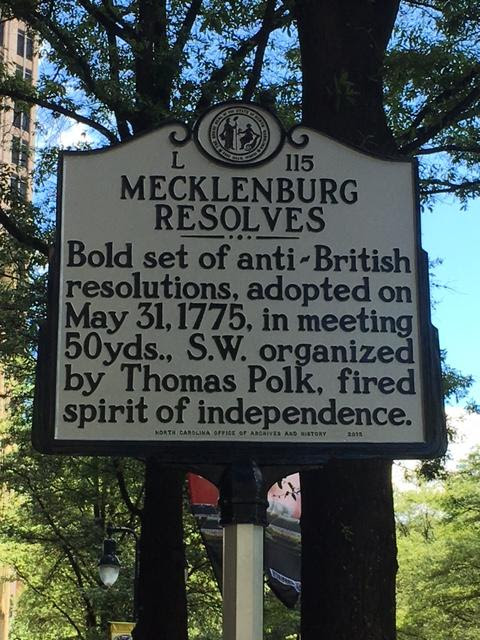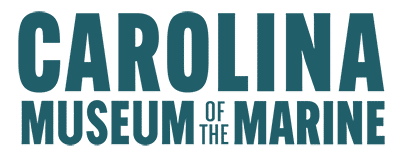Front and Center Vol. 2 No 3 March 2023
FRONT AND CENTER
Vol. 2, No 3, March, 2023
Mission
Honoring the legacy of Carolina Marines and Sailors and inspiring future generations.
A Message from the CEO
With the team to build the Museum in place, we are moving out on the “Concept Design” phase with Ralph Applebaum Associates (Exhibit Designer). It is fascinating to work with this team of experts as they develop an inspiring story that will be physically represented in the Museum. Also, the Architects (CJMW) are adjusting the original floor plan to enhance the visitor experience and capture all the requirements of the Exhibit Designers.
Simultaneously, our General Contractor (SAMET) is executing a host of pre-construction activities focused on value enhancements and identification of long-lead items. All the while, our Construction Management firm (HICAPS) is working to synchronize activities to keep us on schedule and within budget.
It is exciting to see all the progress and we look forward to the day when we can announce our groundbreaking. We have one final approval pending with the site lease and it is being worked aggressively through all the different stakeholders. We are going to build a world-class museum!
While we are working on design and pre-construction, the Al Gray Institute is producing a steady stream of content (classes and interviews). Please look at our website (www.museumofthemarine.org) to review this material and provide us your feedback. It is a work in progress, and we are constantly striving to make it better.
Check out the pictures below of our newest artifact, a vintage 1967 151 Jeep! Thank you to Matt Raymond, Jr.! He has been and continues to be an ardent supporter and we are so thankful for his contribution (just one of many).
Also, we have hired CWO5 (Ret) Lisa Potts as our Curator. She has been a Board Member and volunteer for years; her passion and commitment to our mission is inspiring and we are blessed to have her on the team full-time.
Lastly, the local paper is Swansboro, NC (Tideland News) recently released a superb story on the Museum. Check it out at this link.
Thank you for your continued support.

Semper Fi,

BGen Kevin Stewart, USMC (Ret)
Chief Executive Officer
Situation Report
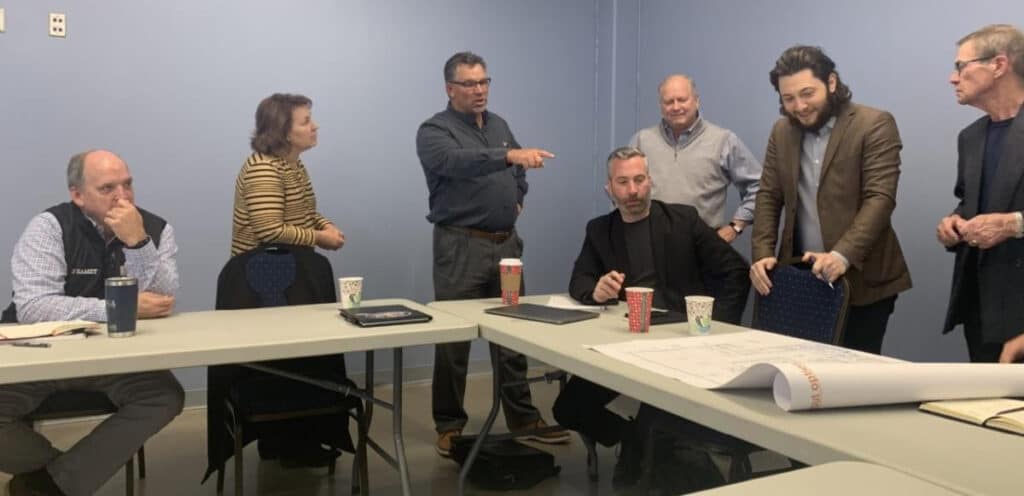
The Team continues to progress as architects, exhibit designers, contractors, and subject matter experts come to the table.
Want to stay informed of our progress?
Marine Leadaership Forum Launches New Classes Online

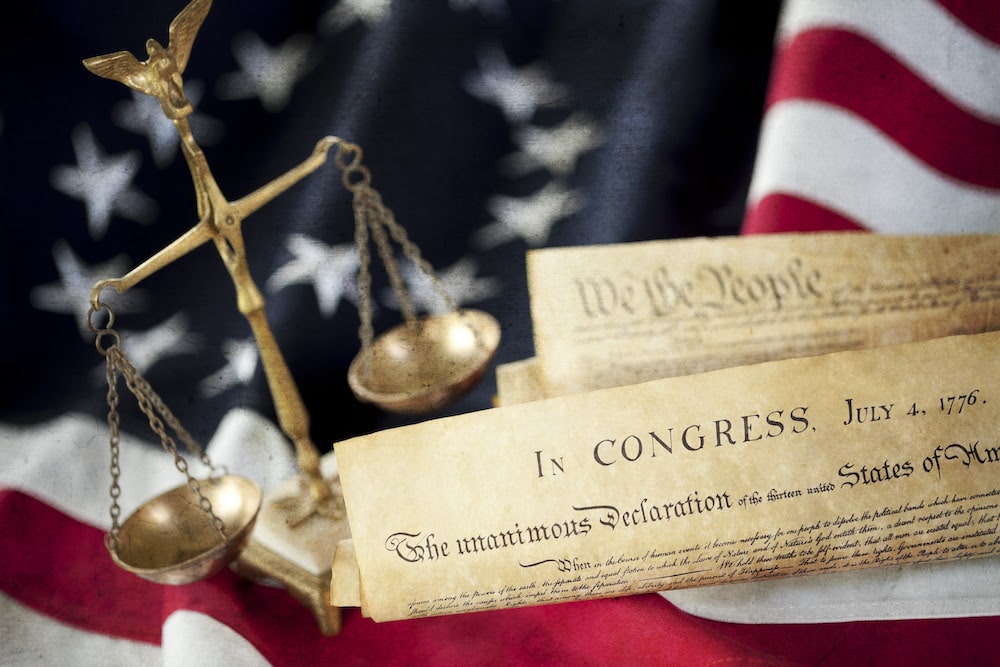
Introduction to Ethics
This course is an introduction to the ethics of virtue. Virtue ethics may be held to be the primary tradition of moral thought and practice before the 18th century, and importantly, the moral perspective of Americans of our founding generation.
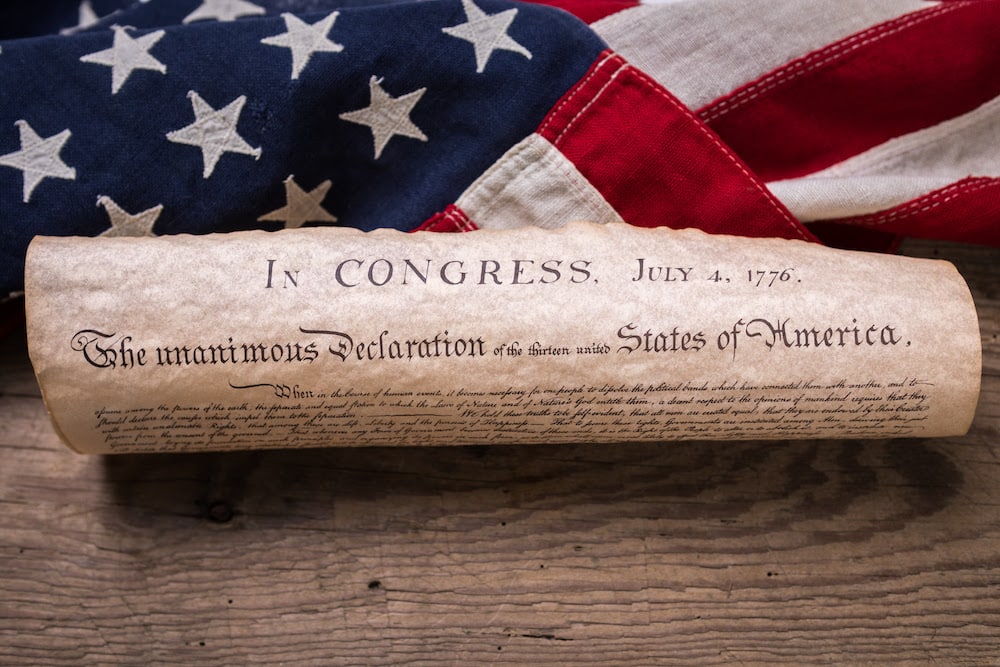
The Founding Principles of the United States
This course examines the political, legal, and moral principles at the founding of the United States, and traces many of them into the earlier English tradition that nurtured early Americans.
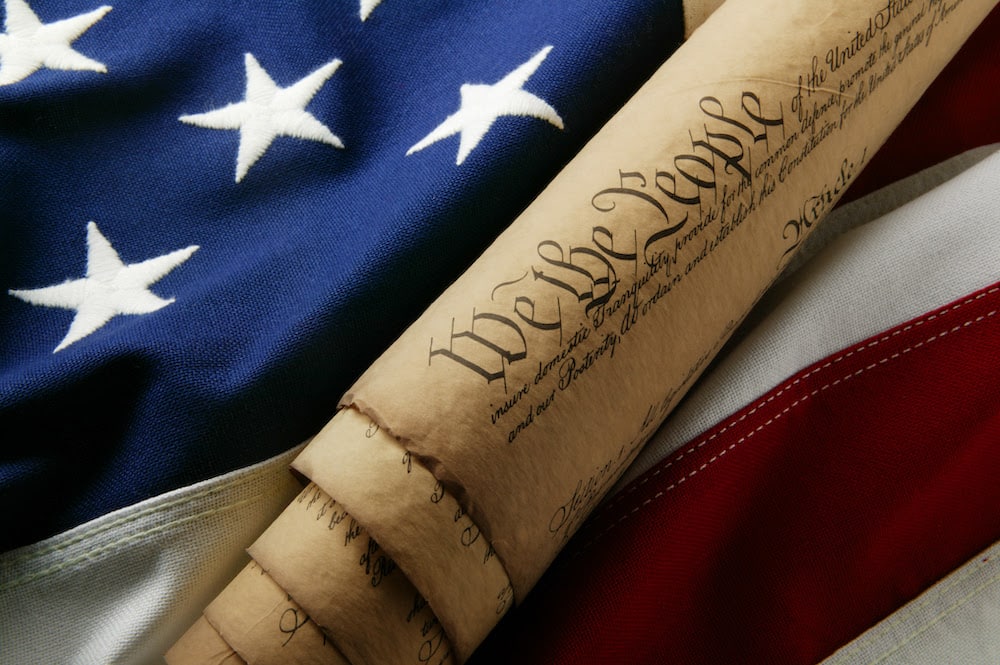
The Constitution of the United States
This course is an examination of the Constitution as it was understood by the Americans who wrote it and ratified it.
Click here to see the full list of classes currently available free online.
Interview with Carolina Marines and Sailors
Dr. Jim Danielson interviews…
SgtMaj Joe Houle, USMC (Ret)
and CWO5 Lisa Potts, USMC (Ret)
Editor’s note: We welcome Curator Lisa Potts as our first hire for the museum
See also interview with:
SgtMaj Paul Siverson, USMC (Ret),
MGySgt Paul Levesque,USMC (Ret) and
MSgt Frances Hayden, USMC (Ret)
Al Gray Marine Leadership Forum Essays
The intent of these essays is to create civil discourse and spur thought. In line with our mantra of “teaching how to think, not what to think” these essays are complex, and the issues addressed are difficult to navigate without sparking some disagreements.
We welcome this, as we work to inspire principled and committed leaders.
On May 31, 1775, the citizens of Mecklenburg County, North Carolina seceded from the British Empire. They did this through a series of five resolutions called the Mecklenburg Resolves that were published in the North Carolina Gazette in New Bern on June 16, 1775. (At the time, New Bern was the capital of North Carolina.) These resolutions are highly reminiscent of the Declaration of Independence, and the similarity in language indicates that Americans at the time were in the habit of thinking and talking in this way. For example, the second resolve begins: “That we the citizens of Mecklenburg county, do hereby dissolve the political bands which have connected us to the Mother Country,…” The Declaration of Independence begins similarly: “When in the Course of human Events, it becomes necessary for one People to dissolve the Political Bands which have connected them with another,…” In what follows, we will examine the Mecklenburg Resolves to understand what the people who wrote and published them were determined to do.
The Mecklenburg Resolves, also called the Charlotte Town Resolves, were adopted at the Mecklenburg County courthouse in Charlotte, North Carolina just weeks after the British and Americans clashed at Lexington and Concord. In the second resolution, the North Carolinians identify a particular British outrage as the reason for the Resolves: “…and inhumanly shed the innocent blood of American patriots at Lexington.” The fighting in Massachusetts led to similar political responses in other parts of the country, but the citizens of Mecklenburg County made it clear that they were no longer bound by any acts or decrees of the King of England or the Parliament. Resolution 2: “Resolved, That we the citizens of Mecklenburg county, do hereby dissolve the political bands which have connected us to the Mother Country, and hereby absolve ourselves from all allegiance to the British Crown, and abjure all political connection, contact, or association, with that nation, who have wantonly trampled upon our rights and liberties—and inhumanly shed the innocent blood of American patriots at Lexington.”
It is interesting to note that the first resolution is a rather aggressive statement of the political attitude of the citizens of Mecklenburg County. “Resolved, That whoever directly or indirectly abetted, or in any way, form or manner, countenanced the unchartered and dangerous invasion of our rights, as claimed by Great Britain, is an enemy to this country—to America—and to the inherent and inalienable rights of man. ”We see at this time the coalescing of a militant stand for freedom and independence that one can see emerging in Boston in 1761 in the fight against writs of assistance which allowed British agents in America to write their own warrants to enter people’s houses and search them. We find this stance in an important speech by Samuel Adams on the steps of the Pennsylvania statehouse in Philadelphia on August 1, 1776, after American independence had been declared. There was significant debate going on about whether it was wise to break with Britain. Many people were loyalists and wished to stay under British rule. Late in his speech, titled “American Independence,” Adams dismisses those loyalists who will not be persuaded to support American freedom. “If you love wealth better than liberty, the tranquility of servitude, than the animating contest of freedom—go from us in peace. We ask not your counsels or arms. Crouch down and lick the hands which feed you. May your chains set lightly upon you, and may posterity forget that you were our countrymen.”
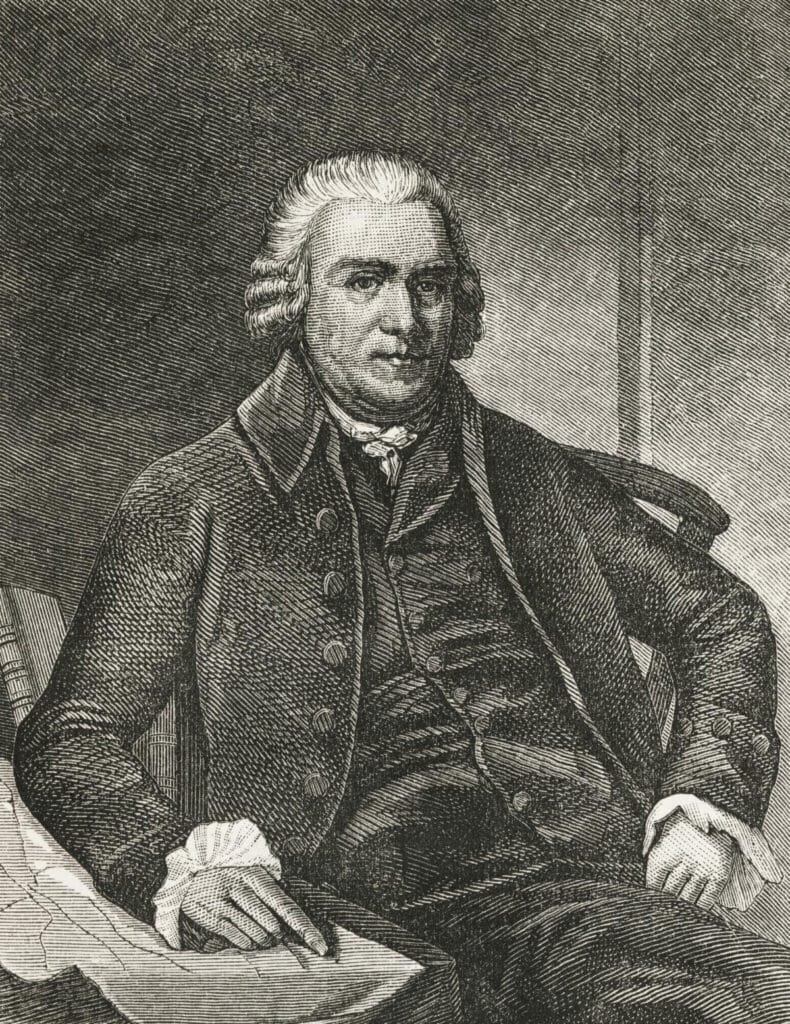
“Samuel Adams (1722-1803). Engraved image from a Harpers Monthly Magazine, July 1876. The image is currently in public domain by the virtue of age.”
Human affairs are complex, which is why we should be suspicious of simplistic interpretations of important events, especially when the interpretations are moralistic, because they are almost always framed in ways that admit of no compromise, and therefore no solution. This is harmful to political society because people in different parts of a large country have differing economic and political interests, and those interests have to be negotiated according to agreed-upon legal, economic, and political principles, and not by contentious and often contrived moral “principles.” When Samuel Adams delivered his speech in August of 1776, Americans were at war with Britain in a struggle for independence. One may reasonably argue that when the Mecklenburg Resolves were published in May of 1775, Americans were at war with Britain having fought the British Army in Massachusetts the month before.
Even so, Americans were divided about what to do, with many people willing to make concessions to the Crown even after military conflict. The people of Mecklenburg County, North Carolina, like so many in the North, including Samuel Adams, were no longer willing to make concessions to Britain, taking the position that once the shooting starts, concession is capitulation, and this was not to be tolerated.
_____The third resolution anticipates the final paragraph of the Declaration of Independence. “Resolved, That we do hereby declare ourselves a free and independent people, that we are, and of right ought to be, a sovereign and self-governing Association, under the control of no power other than that of our God and the General Government of the Congress; to the maintenance of which independence, we solemnly pledge to each other, our mutual co-operation, our lives, our fortunes, and our sacred honor.” One of the features of this language that stands out has to do with the understanding of where in a self-governing political society sovereignty is lodged. In order confidently to “declare ourselves a free and independent people,” the citizens of Mecklenburg County had to believe that sovereignty belonged to them as a people, and not to a government somewhere else with authority to command them with or without their consent. Regarding the “General Government of the Congress,” the developments of the time are interesting because North Carolinians were creating a state government with a nascent legislature in New Bern at the same time the colonies were establishing for themselves a Continental Congress to provide for the common defense. However, these legislative bodies operated on the principle of federalism that requires governing authority to be held at the local-most level possible for self-government, which is why the people of Mecklenburg county saw themselves as a sovereign people with authority to govern themselves without the permission of another political society.
In the fourth and fifth resolutions, the people first declare every British official or agent in the county to be stripped of authority and “the Crown of Great Britain never can be considered as holding rights, privileges, immunities, or authority therein.” Here again we see the Declaration of Independence which begins by saying that governments are established by a people for the purpose of protecting their rights to life, liberty, and property, and that when government becomes abusive of these ends, “it is the Right of the People to alter or abolish it, and to institute new Government, laying its Foundation on such Principles, and organizing its Powers in such Form, as to them shall seem most likely to effect their Safety and Happiness.” So, having abolished the government of Britain in Mecklenburg, the citizens set about in the fifth resolution to institute new government. “Resolved, That it is also further decreed, that all, each and every military officer in this county, is hereby reinstated to his former command and authority, he acting conformably to these regulations. And that every member present of this delegation shall henceforth be a civil officer, viz. a Justice of the Peace, in the character of a ‘Committee-man,’ to issue process, hear and determine all matters of controversy, according to said adopted laws, and to preserve peace, and union, and harmony, in said county—and to use every exertion to spread love of country and the fire of freedom throughout America until a more general and organized government be established in this province.”
In these five resolutions we find the unfolding of the right of self-government and its operation that is set out in the Declaration of Independence. Government committed an outrage against its duty by shooting and killing citizens of a sovereign people at Lexington in Massachusetts. That government is therefore abolished, and a new government set in motion by restoring to command military officers of North Carolina who had been dismissed by the British, and by appointing the delegates at Mecklenburg Courthouse a new civil government until a more general and organized government can be established. Of course, political principles, like constitutions, do not enforce themselves. This has to be done by sovereign people, as the citizens of Mecklenburg County did in 1775. Moreover, in order to ensure that government restrains itself by obeying the law that governs it, and in this way protect the rights of the people, the patriots of Mecklenburg County, North Carolina enjoin us to “use every exertion to spread the love of country and the fire of freedom throughout America….”
LVT
by LtCol L.J. Kimball, USMC (Ret)
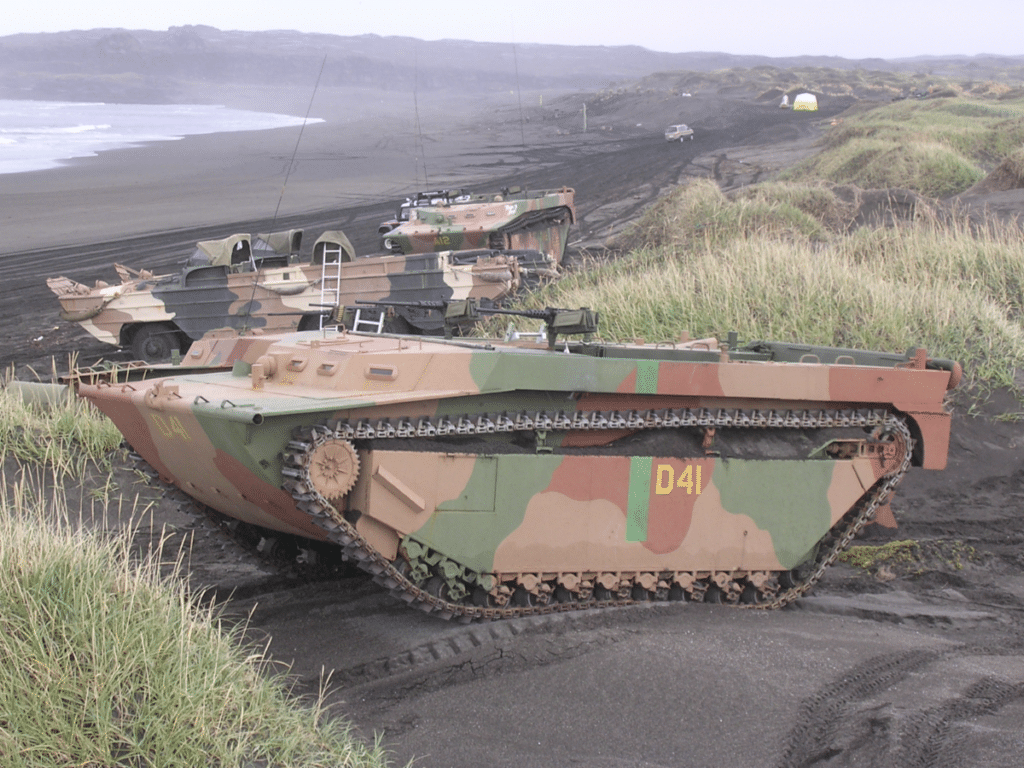
“Landing Vehicle, Tracked”
Well chronicled in the Marine Corps’ hard-fought advance across the Central Pacific during WW II was the use of the ubiquitous LVT, in naval parlance, the “Landing Vehicle, Tracked,” or more commonly, the “amtrac,” the tactical employment of employment of which was essential to the successful capture of a series of amphibious objectives from Tarawa in 1943 to Okinawa in 1945 by the U. S. Marine Corps. As succinctly concluded by General Holland M. Smith, “The development of the LVT provided the solution and was one of the most important modern technical contributions to ship-to-shore operations. Without these landing vehicles our amphibious offenses in the Pacific would have been impossible.” In a broader perspective, the LVT supported and was a deciding factor in thirty-three operations initiated by amphibious assault conducted by Marines in the Pacific and the U. S. Army and Allied forces worldwide. (This number, however, does not include the Guadalcanal operation in 1942. Even though the LVT was invaluable there logistically, it’s tactical potential had only begun to be appreciated and it would not be employed tactically until Tarawa.)
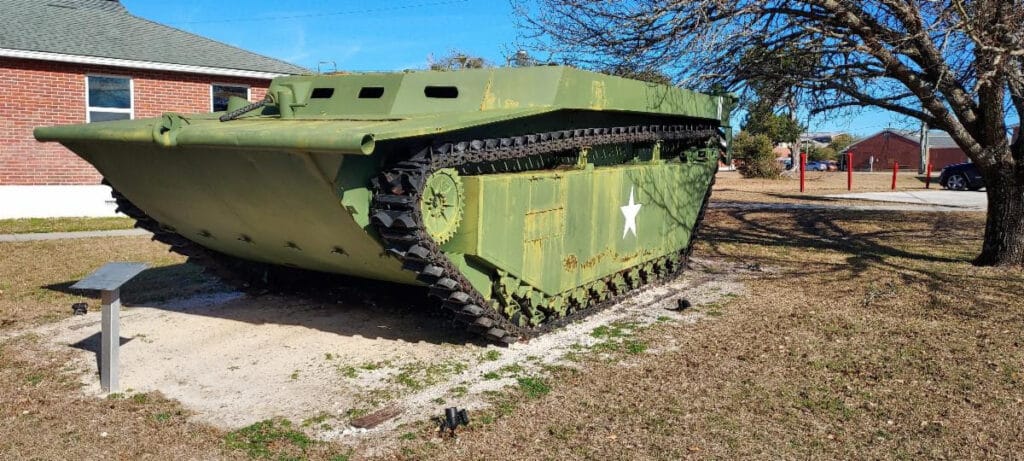
The LVT figures prominently in the history of the Carolina Marines in WW II, and beyond, specifically the 1st and 2nd Amphibian Tractor (Amtrac) Battalions (Bn), although this paper will focus on the WW II era since four models of the LVT were employed during that period, the LVT-1 through the LVT-4, with the LVT-3 being the final and ultimate iteration of the classic vehicle that originated in the 1940s and continued to serve through the Korean conflict. Two LVT-4s, which were manufactured in the greatest number, 8,348, currently survive locally, one in front of the 2nd Assault Amphibian Battalion’s headquarters at Camp Lejeune’s Courthouse Bay, Building 5, and the other being a valued artifact in the collection of the Carolina Museum of the Marine (CMOTM).
Carolina Marines are defined generally as those naval units (Navy, Marine or Coastguard) and personnel (military and civilian) that at any time since the establishment of Camp Lejeune (initially Marine Barracks, New River) in May of 1941 have contributed in any respect, in North or South Carolina, through their presence in the operating forces, supporting establishment or reserves to the successful accomplishment of the many and varied missions of the U. S. Marine Corps.
In regard to LVTs, this designation would start with the 1st Marine Division (MarDiv), the advance echelon of which arrived at Camp Lejeune in September of 1941. In December, one day after Pearl Harbor, the first detachment of Marines arrived with the LVT-1 from Dunedin, Florida, where the Marine Corps had been working since 1937 with Donald Roebling, an inspired engineer and inventor whose pedigree included the designer and builder of the Brooklyn Bridge, to convert what initially had been a humanitarian conceived effort to develop an amphibious tractor capable of assisting hurricane victims from its rather anemic prototype to a creditable combat vehicle.
At first, still envisioned shortsightedly as little more than a motor transport asset despite its enthusiastic acceptance by the Marine Corps and the incremental upgrade of the prototype until its final conception, designated the “Alligator,” the LVT-1 was ordered into production. But, justifiably enthralled with potential of this vehicle, the Marine Corps ordered 300 in 1941 and assembly lines were established in four separate companies to facilitate current and future manufacture. The LVT-1, powered by a 146 hp Hercules engine, was capable of carrying 20 fully equipped troops or 4500 pounds of cargo at a speed of 6 mph in the water or 12 mph on land.
Augmentation of the 1st MarDiv continued and the 1st Amtrac Bn (the Dunedin detachment becoming Company A) was activated at Peterfield Point on 16 February 1942. Later that spring, having been alerted in April for the Solomon Islands’ Guadalcanal operation, the depleted 1st MarDiv, including the 1st Amtrac Bn, was divided into two echelons and moved by rail to the ports of embarkation to sail to New Zealand where its units and those reinforcing, dispersed throughout the Pacific, would have less than three weeks to assemble and prepare for the United States’ first major offensive of WW II.
The 1st MarDiv and its organic LVTs would not return to Camp Lejeune following the war and their role in the Guadalcanal campaign would conclude their identification as Carolina Marines. Conversely, the 2nd Amtrac Bn, activated on 18 March 1942 in San Diego, California, along with the remainder of the 2nd MarDiv, are clearly legacy units of the Carolina Marines since Camp Lejeune has been their home for eight decades although originally formed on the west coast. Their operational history in the CMOTM and such additional background as necessary to place their role in perspective begins with the Guadalcanal campaign where LVTs from both the 1st and 2nd Amtrac Bns would be employed to bring the 1st MarDiv up to division strength for the operation. Since the amtrac was originally conceived as a logistics asset, the amtrac bn was organized similarly to division motor transport battalions with ten LVTs in the headquarters and 30 in each of three lettered companies, although the number of companies became a variable depending on the operational situation. A lettered company was to be attached to each infantry regiment for operations.
The story of the 1st Amtrac Bn, which initially contributed 100 LVT-1s for D-Day at Guadalcanal, 7 August 1942, thus ends here in the CMOTM as a result and that of the 2nd Amtrac Bn, which contributed 30, begins. The number actually involved in the landings and subsequent employment was reduced considerably by maintenance deficiencies and overuse of this invaluable asset, issues that would become endemic problems likewise plaguing future operations.
The 1st MarDiv’s 5th Marines and 1st Marines conducted the landings on Guadalcanal Island itself, being augmented respectively by Companies A and B of the 1st Amtrac Bn, in what were fortuitously unopposed landings across reef-free beaches since the initial waves were boated on landing craft. Company B, 2nd Amtrac Bn, was attached to the 2nd Marines, the landing force reserve. Both battalions performed admirably in their assigned roles, demonstrating a remarkable mobility carrying troops through shallow water and inland from the beach, and additionally providing unanticipated fire support with their machine guns. This first combat employment of amtracs had a major effect on amphibious doctrine.
Warfare provided the major impetus for weapons development and doctrinal change. Guadalcanal put to rest the military conservatism that envisioned the landing craft adequate for assault landings and saw the amtrac as only a sea-going truck. The necessity of amtrac employment in the ship-to-shore movement, especially facing the specter of the well defended reef-encircled atolls of the Central Pacific, became evident. No further landings without amtracs leading the assault would be made. As noted by the renown British historian, strategist and warfare theorist Major General J.F.C. Fuller, the tracked landing vehicle was ”…the most far -reaching innovation of the second world war.”
Seizing Betio Island in the Gilbert Islands’ Tarawa Atoll was the next major operation involving Carolina Marines and would be the 2nd MarDiv’s most iconic and sanguinary battle of the war. On D-Day, 20 November 1943, the division’s attacking regiments, the 2nd and 8th Marines, with the 6nd Marines in reserve, stormed ashore supported by the 2nd Amtrac Bn, which initially provided 75 LVT-1s and 50 LVT-2s in the assault. These numbers proved insufficient as their paucity required subsequent waves to be embarked on landing craft, which grounded on the offshore reef and forced the boated Marines to wade ashore under withering fire. The Marines had learned the lesson of Guadalcanal but despite their protests, the number of LVTs they felt would be required were not provided.
This operation introduced the LVT-2 “Water Buffalo,” which joined the 2nd Amtrac Bn in 1943 and eventually, along with the LVT-4- joining the battalion in 1944-would constitute enough vehicles in future operations to properly, at least initially, support the doctrinal requirement for amtracs in all the assault waves. The LVT-2 would be the basic design for all subsequent amtrac models in WW II and participate in more operations. It was almost six feet longer than the LVT-1, and powered by a seven-cylinder Continental radial engine producing 220 hp, could carry 24 fully equipped troops or 6500 pounds of cargo at essentially the same water speed as its predecessor but with a land speed of 20 mph. This readily available engine powered most of the country’s primary flight trainers as well as the M5 light tank.
Saipan in the Mariana Islands was the next objective in the Central pacific drive that involved Carolina Marines. A D-Day of 15 June 1944 saw the island assaulted by the V Amphibious Corps (VAC), consisting of the 2nd and 4th MarDivs, with the 6th and 8th Marines conducting landings on the northern-most beaches. Six amtrac bns were in support, including the 2nd Amtrac Bn, which provided 85 LVT-2s and 33 LVT-4s in the assault. The LVT-4 “Water Buffalo,” first used by the 2nd Amtrac Bn at Saipan, was similar to the LVT-2 in many respects but had two significant modifications: the engine, the same used in the LVT-2, was moved from the rear to just behind the driver’s cab, providing a larger cargo area while retaining a capacity of 24 fully equipped troops, and enabling the second modification, the installation of a rear loading ramp, which facilitated the loading and unloading of cargo and afforded much greater protection to the embarked troops when exiting the vehicle.
Tinian followed on 24 July 1944 for the VAC with the 2nd Amtrac Bn being one of the four amtrac bns in support, providing 96 LVT-2s and 40 LVT-4s. The 2nd MarDIv, however, would not be participating in the D-Day assault, which would be conducted by the 4th MarDiv. Its mission would be to conduct a diversionary feint against the southern part of the island and land the 2nd and 6th Marines the next day behind the beaches secured by the 4th MarDiv in the north. This would be the last contested amphibious assault conducted by Carolina Marines during the war.
The 2nd MarDiv and attached units, specifically the 2nd Amtrac Bn, would be present at Okinawa but only as the Tenth Army Demonstration Force and Floating Reserve. After conducting demonstrations off the southeast coast on D-Day, 1 April 1945, and D+1, the division reverted to an area reserve status and deployed to Saipan. On 30 May, the 8th Marines were reinforced and returned to Okinawa, supported by the 2nd Amtrac Bn, as a special Landing Force, and conducted unopposed landings on a series of small islands to the south and west of Okinawa. The regiment was attached to the 1st MarDiv on 15 June to assist with final operations.
WW II’s final amtrac was the LVT-3 “Bushmaster” which, because of production difficulties, followed the LVT-4 into operational service in 1945, becoming the Marine Corps’ standard landing vehicle through the Korean War and until replaced by the LVT-5 family of vehicles in 1953. The most noteworthy improvement over its predecessor was the replacement of the radial engine that had powered the LVT-2 and 4 with twin Cadillac V-8s, each being placed in one of the side, flotation sponsons, providing together 296 hp and significantly expanding the available cargo area. This resulted in an increased cargo capacity of 9000 pounds or 30 troops.
The war’s conclusion in August 1945 found the 2nd MarDiv on Saipan, leaving there in September for occupation duty in Japan on the southern island of Kyushu at Nagasaki. They remained there until returning to States and switching coasts in July of 1946 to become one of the Corps’ two postwar divisions, arriving at Camp Lejeune on 13 July. One of the casualties of the vast peacetime drawdown was its organic amtrac bn, the 2nd Amtrac Bn, which was deactivated on 29 November 1945 at Camp Pendleton. In a compensatory move, the 5th Amtrac Bn, which had served so ably at Iwo Jima, was relocated to Camp Pendleton in January of 1946, redesignated the 2nd Amtrac Bn in April, and moved to its new home at Courthouse Bay, Camp Lejeune in June. Production of all LVTs was terminated with the conclusion of the war, leaving the 2nd Amtrac Bn equipped with the LVT-3. All other models, including the LVT-4, were declared surplus and disposed of.
The two LVT-4s surviving locally continue to serve as monuments to the invaluable role amtracs and the Carolina Marines played in the war’s hard-fought victory, a role lauded by General Roy S. Geiger, USMC, the namesake of Camp Geiger, who observed that it would have been impossible to get ashore on Tarawa, Saipan, Guam or Peleliu without taking severe if not prohibitive losses except for the amtracs. He added that their use extended beyond the assault waves, being indispensable likewise in the subsequent movement of troops, equipment and supplies ashore. Recreating their specific operational history is problematic, however, since all the LVT-4s were disposed of following the war and their service prior to disposition was not a required matter of record or retention and generally, given the thousands declared surplus, more subject to indifference. With the Marine Corps drawing down from nine amtrac bns to two in 1945, along with the massive personnel and equipment drawdowns, there was little priority given to maintaining or resources available to maintain what became of each amtrac.
Building 5’s LVT-4 was partially spared this indignity because of the appearance of the Marine Corps Historical Program and the requirement for more detailed record keeping concerning such artifacts. Based on the earliest available records, the LVT had apparently languished on Onslow Beach as an unattended monument since at least 1972 until it was moved at some point to the Amphibious Area ramp near where the amphibious vehicle repair shop (A47) was later built in 1986. In 1984 it was moved to its current location.
Even less is known about the provenance and history of the LVT in the CMOTM collection. At some point it was acquired by a local collector of militaria and parked in the front of Fisherman’s Wharf on US Highway 17S along with a DUKW, LCVP and other historical items. In 2006 it was borrowed, repainted and used by Clint Eastwood’s production company in the filming of the epic motion picture Flags of our Fathers. Following it’s return, the LVT was gifted to the museum. Although there is no apparent direct tie to the Carolina Marines, its role in portraying an assault vehicle in one of the most momentous combats of WW ll deserves mention, a role likewise played in actuality by the Carolina Marines in other chapters of the war.
Iwo Jima was the most difficult and bloodiest battle involving the Marine Corps during the Navy’s heavily contested drive through the Central Pacific. During which, one event in particular, the raising of a flag on Mt. Suribachi by Company E, 2nd Battalion, 28th Marines, 5th MarDiv, which in itself electrified the struggling Marines on the island and the surrounding fleet, resulted in a photograph that epitomized thereafter the character of the Corps, reinvigorated a discouraged country, won the Pulitzer Prize, inspired an outpouring of monetary support for the 7th War Bond Drive that exceeded all the previous drives combined, was reimagined in the world’s largest bronze statue-the Marine Corps War Memorial in Arlington National Cemetery, and became the most famous photo of the war. The six unassuming Marines participating were apotheosized onto the pantheon of heroes by their actions, the portentous significance of which was not understood by them at the time.
Iwo Jima (being portrayed in the film by Iceland) was assaulted on D-Day, 19 February 1945, by the 4th and 5th MarDivs, VAC, the 28th Marines landing on Green Beach 1, two battalions abreast, on the leftmost beach. The mission of the 2nd Battalion was to attack across the island to the western side and isolate Mt. Suribachi. Company E was in the 10th wave of troop carrying LVTs, a total of 371 LVT-3s and LVT-4s. The CMOTM amtrac, portrayed in the film as “D 41,” carried the Marines that were going to raise the celebrated flag. Its tactical marking indicated that it was amtrac number 41, Company D, of the 3rd or 11th Amtrac Bn. By 23 February the 2nd Battalion had accomplished its mission and patrols from Company E had successfully reached and secured the volcano’s summit, subsequently raising two flags, the second and larger forever memorializing this uniquely historical event.
The CMOTM’s LVT-4, augmented by Courthouse Bay’s, supports the museum’s mission to promote and preserve the proud history of the Carolina Marines as it represents both the substantial contribution of the Carolina Marines in the advance through the Central Pacific that brought Marines to the shores of Iwo Jima with its flag raising as well as a representative example of the development of the innovative vehicle that enabled the capture of the Pacific stepping stones, from Tarawa to Okinawa, that characterized amphibious warfare conducted by the U. S. Marine Corps.
REFERENCES
Maj Alfred D. Baily, USMC (Ret). Alligators, Buffaloes and Bushmasters: The History of the Development of the LVT Through WW II. Occasional Paper. Washington: History and Museums Div, 1986.
LtCol William S. Bartley, USMC. Iwo Jima: Amphibious Epic. Washington: Historical Branch, G-3 Div, HQMC, 1954.
James Bradley and Ron Powers. Flags of our Fathers. New York: Bantom Books, 2000.
CO, 2nd Assault Amphibian Bn ltr 1000/CO/ 30Jul2018, subj.: Historical Vehicles Within 2nd Assault Amphibian Battalion.
Victor J. Croizat. Across the Reef: The Amphibious Tracked Vehicle at War. Quantico: Marine Corps Association, 1992.
Kenneth W. Estes. Marines Under Armor: The Marine Corps and the Armored Fighting Vehicle, 1916-2000. Annapolis: Naval Institute Press, 2000.
Scott R. Gourley. “Marine Corps Amphibious Vehicles: Addressing the Challenges of Yesterday, Today and Tomorrow.” Series-Uncommon Valor: the 75th Anniversary of the Battle of Iwo Jima. www.defensemedianetwork.com. 29Apr20.
J. D. Ladd. Assault from the Sea 1939-1945: The Craft, The Landings, The Men. New York: Hippocrene Books, 1976
Gordon L. Rottman. U.S. Marine Corps WW II Order of Battle: Ground and Air Units in the Pacific War. Westport: Greenwood Press, 2002.
– USMC Pacific Theater of Operations 1944-45. Oxford: Osprey Publishing 2004.
– US World War II Amphibious Tactics. Oxford: Osprey Publishing, 2004.
Richard Wheeler. The Bloody Battle for Suribachi. New York: Thomas J. Crowell Co., 1965.
Marines Making News…
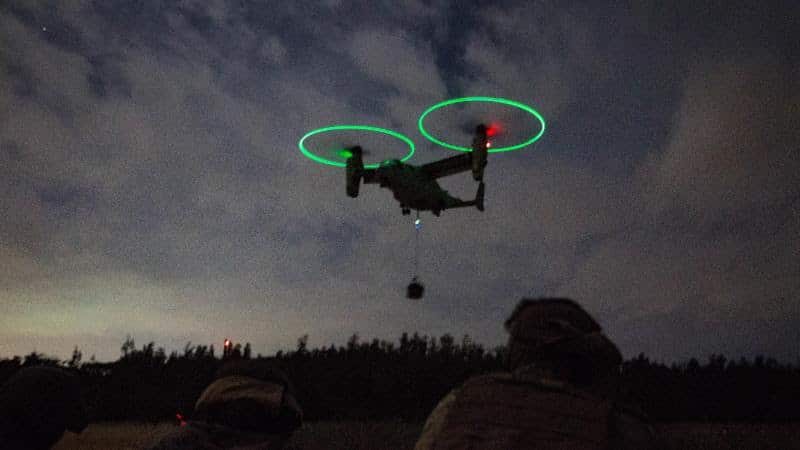
Visit Marines.mil for up-to-date information about United States Marines who are making news.
Please join us in supporting the mission of
Carolina Museum of the Marine
When you give to our annual campaign, you help to ensure that operations continue during construction and when the doors open!
Stand with us
as we stand up the Museum!
Copyright March, 2023
Carolina Museum of the Marine
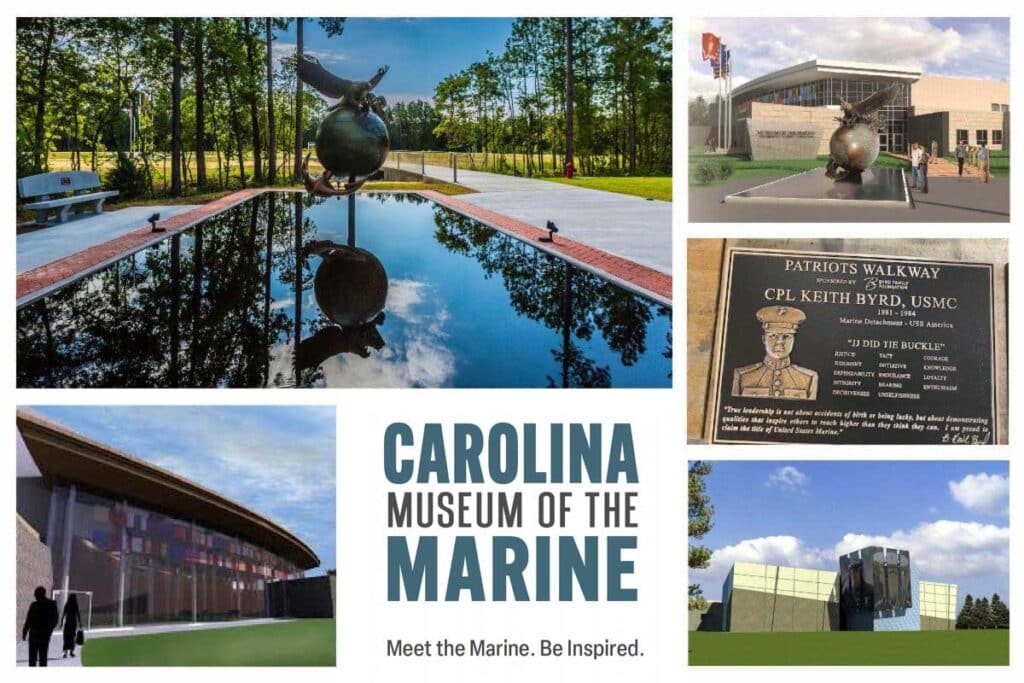
2022-2023 Board of Directors
Executive Committee
LtGen Gary S. McKissock, USMC (Ret) – Chair
Col Bob Love, USMC (Ret) – Vice Chair
CAPT Pat Alford, USN (Ret) – Treasurer
Col Joe Atkins, USAF (Ret) – Secretary
Mr. Mark Cramer, JD – Immediate Past Chair
General Al Gray, USMC (Ret), 29th Commandant – At-Large Member
LtGen Mark Faulkner, USMC (Ret) – At-Large Member
Col Grant Sparks, USMC (Ret) – At Large Member
Members
Mr. Keith Byrd, US Marine Corps Veteran
Mr. Tom DeSanctis
MGySgt Osceola Elliss, USMC (Ret)
Col Chuck Geiger, USMC (Ret)
Col Bruce Gombar, USMC (Ret)
LtCol Lynn “Kim” Kimball, USMC (Ret)
CWO4 Richard McIntosh, USMC (Ret)
CWO5 Lisa Potts, USMC (Ret)
Col John B. Sollis, USMC (Ret)
GySgt Forest Spencer, USMC (Ret)
Staff
BGen Kevin Stewart, USMC (Ret), Chief Executive Officer
Ashley Danielson, VP of Development
SgtMaj Joe Houle, USMC (Ret), Operations and Artifacts Director
Richard Koeckert, Accounting Manager
Carolina Museum of the Marine is a nonprofit organization that is rigorously nonpartisan, independent and objective.

